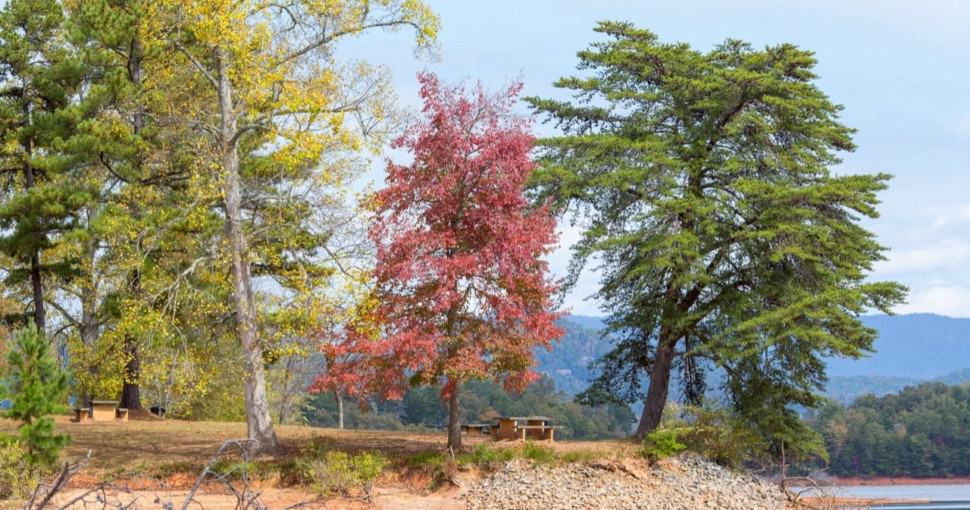North Carolina’s woodlands have the most tropical and temperate tree species of any state in the east coast. The great changes in temperature, humidity, and soil found on the state’s three geographic zones, the piedmont, the coastal plain, and the mountain region, contribute to the diversity and abundance of species.
Contents
- 1. Black Gum (Eucalyptus ovata)
- 2. Green Hawthorn (Crataegus)
- 3. Pawpaw (Asimina triloba)
- 4. Sassafras (Sassafras albidum)
- 5. Serviceberry (Amelanchier arborea)
- 6. Carolina Silverbell (Halesia carolina)
- 7. Eastern Red Cedar (Juniperus virginiana)
- 8. Tulip Tree (Liriodendron tulipifera)
- 9. Carolina Cherry Laurel (Prunus caroliniana)
- 10. Loblolly Pine (Pinus taeda)
- 11. Red Maple (Acer rubrum)
- 12. Oak (Quercus)
- 13. Sweetgum (Liquidambar styraciflua)
- 14. Hickory (Carya)
- 15. Bradford Pear/Callery Pear (Pyrus calleryana)
- 16. Crepe Myrtle (Lagerstroemia)
- 17. River Birch (Betula nigra)
- 18. Magnolia (Magnolia grandiflora)
- 19. American Beech (Fagus grandifolia)
- 20. Hackberry (Celtis occidentalis)
- 21. Basswood (Tilia americana)
- 22. White Ash (Fraxinus americana)
Hardwood woods cover 90% of the forests in North Carolina’s mountains, with oak-hickory forests accounting for the majority of the land. Other mixed forests such as oak-pine and maple-beech-birch also account for considerable land. The softwood lands in the western half of the state are dominated by white pine woods.
Over half of the area in the piedmont is covered with forest. Hardwood forest types represent around 74 percent of the terrain, with oak-hickory being the most common, while oak-pine and oak-gum-cypress pairings are also common. Loblolly pine forests are common, but Virginia pine and short-leaf pine are also prominent. Softwood forests make up roughly 25% of the acreage.
Native trees are preferred since they are adapted to the region’s soils, weather, and moisture. They require fewer fertilizers and pesticides and are less likely to become invasive and harm the natural habitat. They are essential to provide food and shelter for local birds and insects.
North Carolina has many native tree species, from pine trees, oak trees, and beech trees, to chestnut trees, maple and walnut trees. It also is home to the oldest living tree species, the Bald Cypress. Here are some of the most common trees found in North Carolina.
1. Black Gum (Eucalyptus ovata)
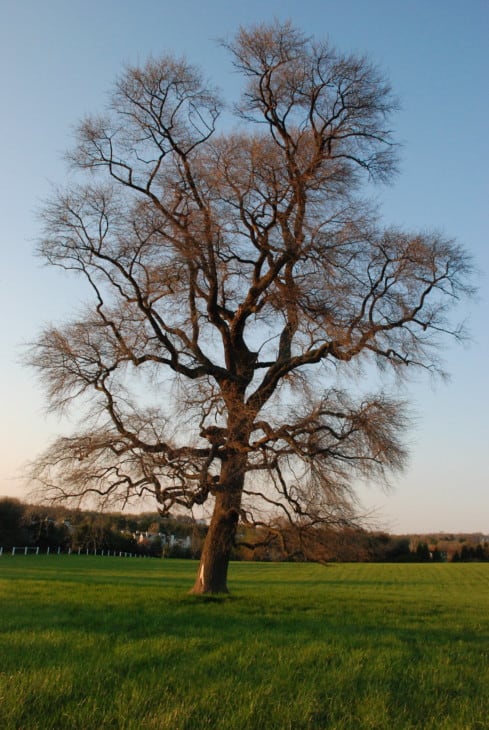
This species grows evergreen, upright shrubs up to 60 to 90 feet tall with blue-green leaves. Its bell-shaped white flowers bloom from June to November. Many species of birds, such as robins, woodpeckers, cedar waxwings, and bluebirds, feed on the fruit produced by these big shade trees. The trees feature stunning crimson foliage in the fall.
2. Green Hawthorn (Crataegus)
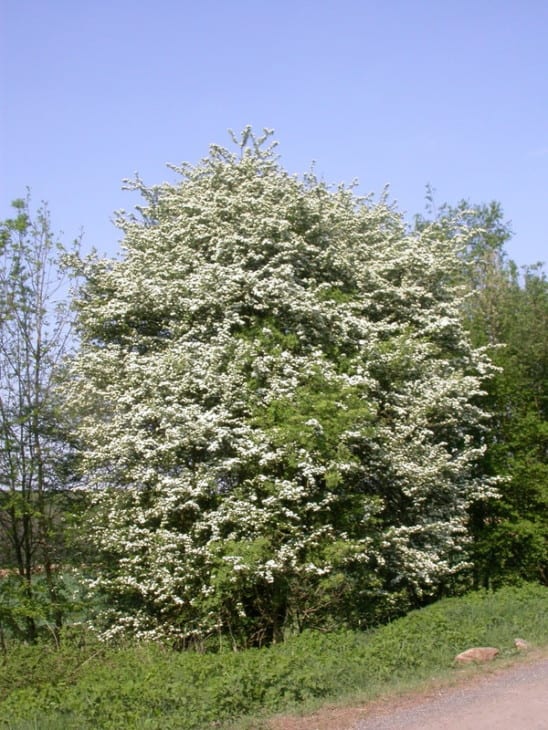
The Green Hawthorn is commonly found in swamps, bottomlands, other wetlands in North Carolina and grows up to 20 to 35 feet tall. Hawthorns are medium-sized ornamental underbrush trees with spectacular white flowers in the springtime and red berries all year. These trees are extremely beneficial to wildlife: insects love their spring blossoms, and their winter berries draw in a diverse range of species.
3. Pawpaw (Asimina triloba)

The Pawpaw tree is found across the eastern United States, as far as west into Nebraska, and grows up to 12 to 25 feet tall. The fruits of this native tree taste like a blend between a mango and a passion fruit. It takes 5-8 years for newly planted Pawpaw trees to bear fruit. However, when they grow, they provide additional benefits, such as hosting Swallowtail butterfly larva.
4. Sassafras (Sassafras albidum)
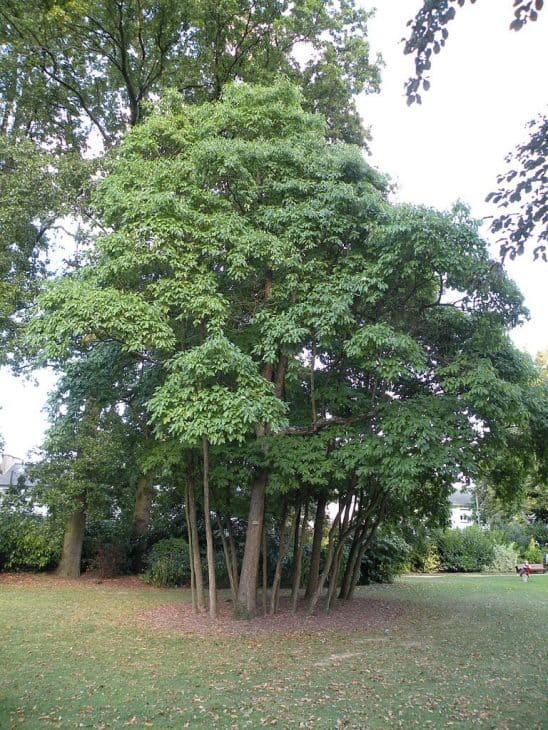
The Sassafras tree features a thick, ridged, reddish-brown bark and grows up to 30 to 50 feet tall. It has very bright green foliage that turns yellow or orange-red in the fall. The tree flowers with yellow to yellowish-green blossoms in early spring. It is widely used to produce home-brewed beer and in certain dishes.
5. Serviceberry (Amelanchier arborea)
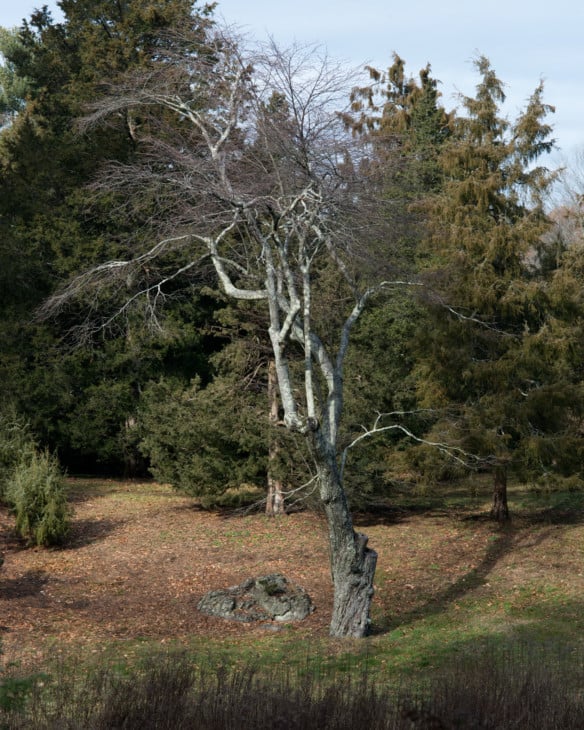
Serviceberry is also known as “sarvis” in North Carolina. It can be found all around the state, although it thrives on mountain slopes. It can reach heights of 40 feet in the wild, but on average, grows up to 15 to 25 feet tall with a slender, rounded appearance. In the spring, this little tree blooms with white flowers, and in the summer, it bears reddish blueberry-like fruits.
6. Carolina Silverbell (Halesia carolina)
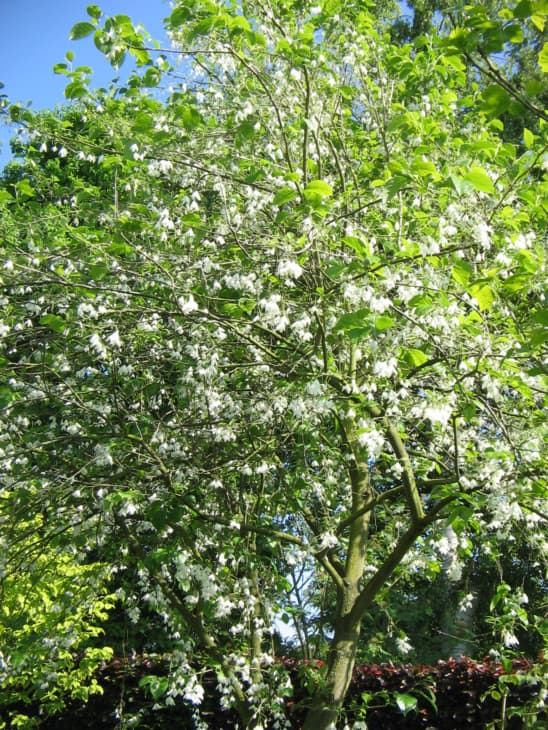
With a trunk diameter of 2 feet, the tree rarely grows taller than 80 feet. The trunks of large trees can lean and twist dramatically. It has a yellow fall hue and an uneven, spreading, wide crown. It blooms in April with white flowers. It can be found growing in rich, humid soil on lower mountain slopes, hills, and river banks.
7. Eastern Red Cedar (Juniperus virginiana)
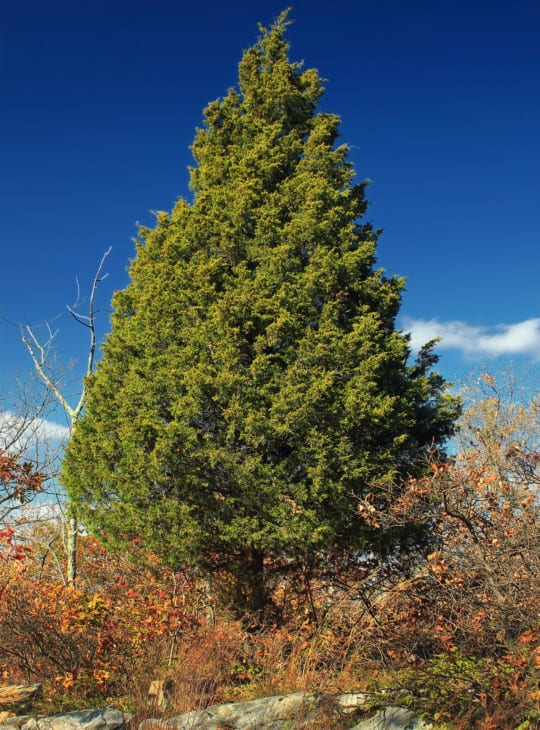
The drought-resistant evergreen Eastern Red Cedar trees provide excellent privacy rows. They produce juniper berries in the fall, which are a great food source for wildlife. It is a slow-growing tree, ordinarily from 20 to 60 feet tall. They have a reddish-brown, fibrous bark that peels off in strips. The oldest tree of this species is over 900 years old and is located in West Virginia.
8. Tulip Tree (Liriodendron tulipifera)
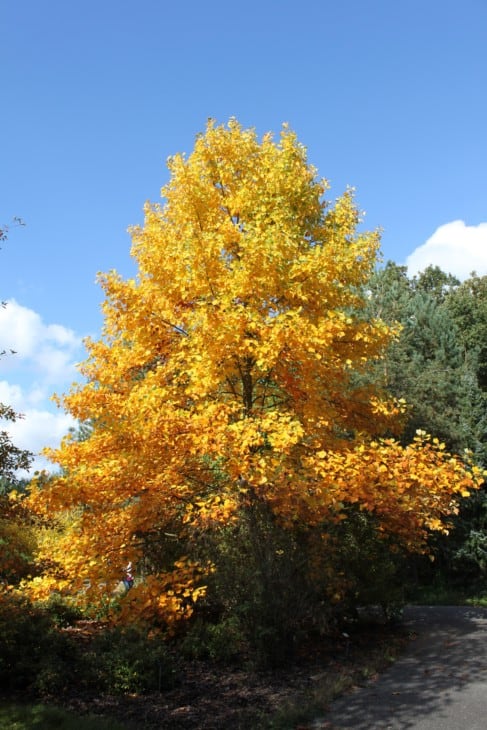
The Tulip Tree requires ample space above and below the ground to grow. It can be distinguished by its unique tulip-shaped flowers, which produce a sweet nectar that bees use to make honey. It can grow up to 70 to 90 feet tall and is native to states such as Florida, Louisiana, Illinois, Rhode Island, and Massachusetts.
9. Carolina Cherry Laurel (Prunus caroliniana)
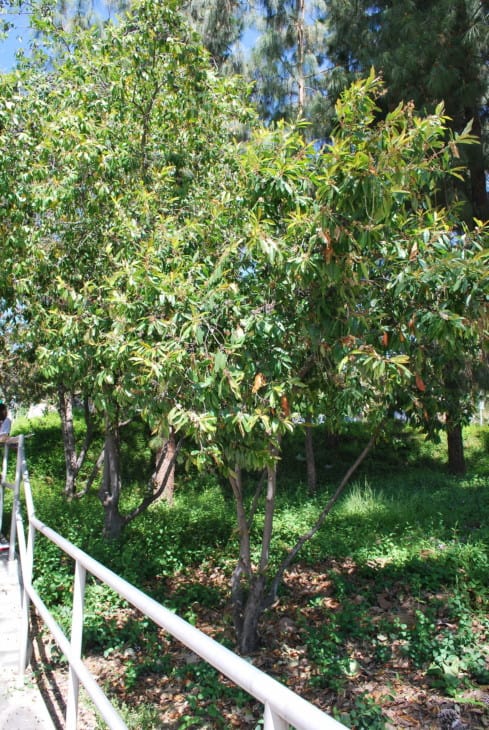
A small evergreen shrub, the Carolina Cherry Laurel tree grows quickly and is excellent for a privacy screen. It can grow as high as 35 feet and is easy to transplant. Its lustrous, dark green leaves have a pleasant cherry fragrance when crushed. White, showy, and fragrant flowers appear in spring.
10. Loblolly Pine (Pinus taeda)
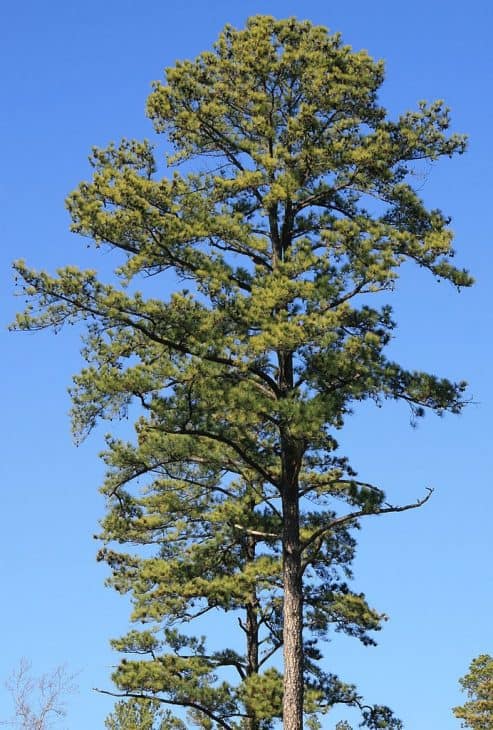
The Loblolly Pine is a type of evergreen pine tree that is indigenous to about 15 states in the southeastern United States. It’s the country’s second most common tree, after the Red Maple, and may be found in lowlands and swampy places. This tree, which may reach a height of 115 feet and a diameter of five feet, is distinguished by its grey, flaky bark and dark green needles.
11. Red Maple (Acer rubrum)
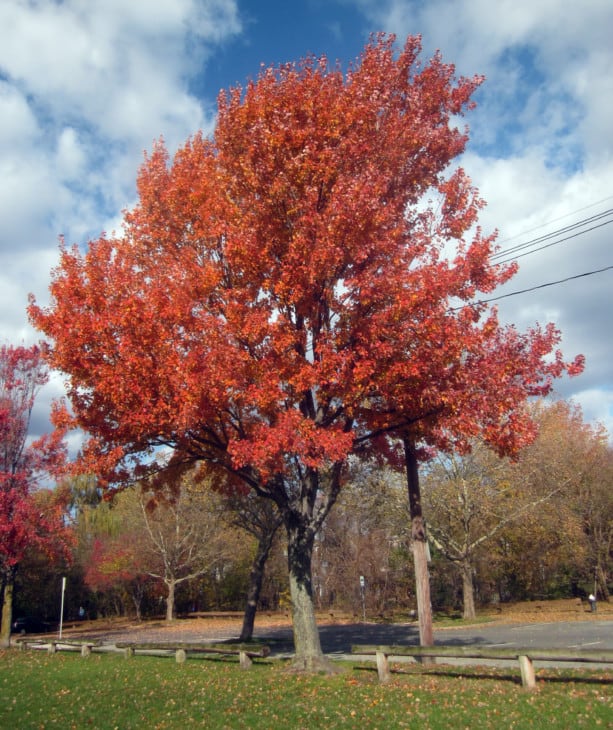
Red Maples trees have one of the most beautiful fall foliage. They are typically less than 40 feet tall and start flowering early in spring. However, some trees grow very tall, reaching about 100 feet. It is commonly used as a park, lawn, or street tree, owing to its vibrant red leaves in the fall. The trees are susceptible to a disease known as gloomy scale.
12. Oak (Quercus)
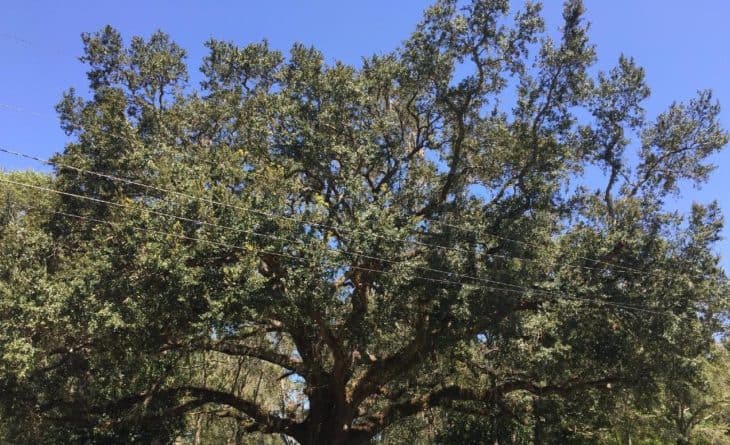
North Carolina is home to more than 30 indigenous oak tree species. Raleigh is often referred to as the City of Oaks. These trees provide shelter, food, and shade for countless wildlife species. The majority of oak trees live for a very long time. Some local favorites include the Willow Oak and the Pink Oak, each known for their unique characteristics.
13. Sweetgum (Liquidambar styraciflua)
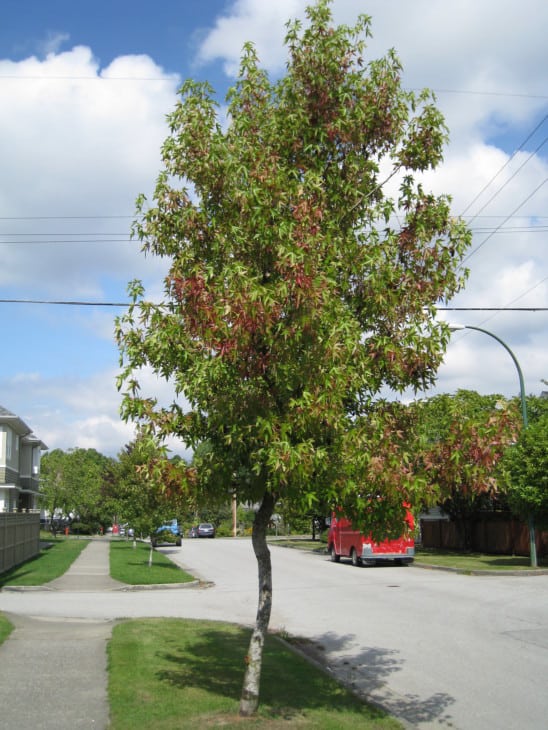
Sweetgum trees grow remarkably straight, reaching heights of up to 120 feet and widths of 4 feet or more, making them ideal for lumber use. These trees grow best in sunny areas and non-alkaline soils and can be found across the Southeast, primarily in wet environments like swamps or river beds that are vulnerable to floods.
14. Hickory (Carya)
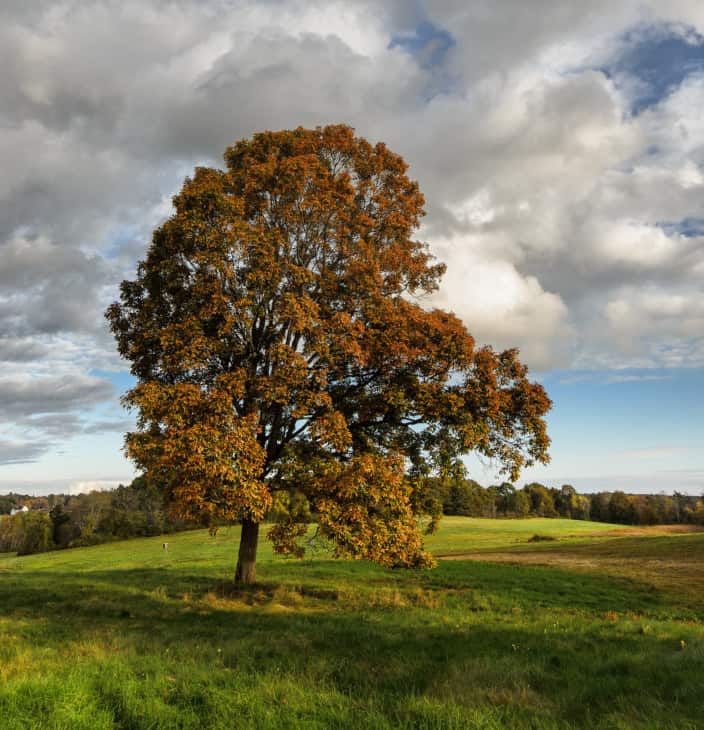
The tree is a common deciduous tree that comes in 12 different species in the United States. Their trademark Hickory nuts and jagged and oval-shaped leaves, which are commonly found near the extremities of branches in clusters of 5 to 17, are an excellent way to recognize them. Thanks to their lengthy taproot, hickory trees are famously slow-growing, making them one of the most difficult tree species to transplant.
15. Bradford Pear/Callery Pear (Pyrus calleryana)
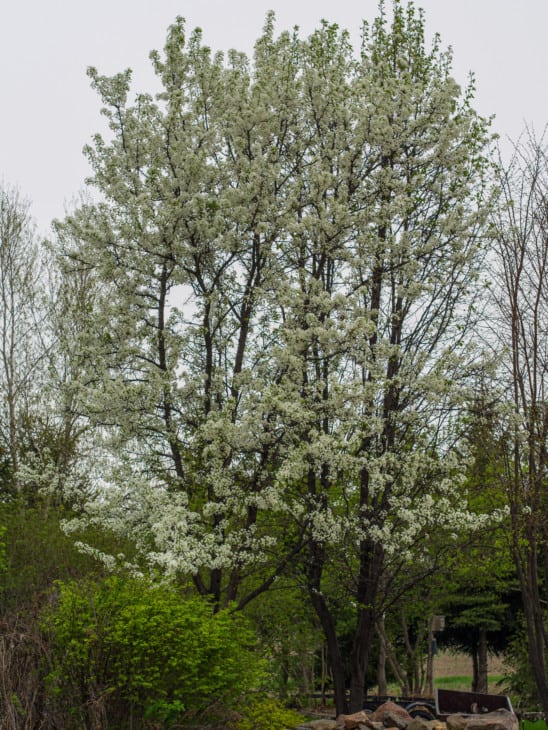
Bradford Pear trees produce a fishy smell in the blooming season, causing many people to consider them a nuisance. They are considered invasive trees in North Carolina due to their nature to thrive in a wide range of soil and weather conditions, such as droughts, intense heat, air pollution. They bloom with distinctive white flowers.
16. Crepe Myrtle (Lagerstroemia)
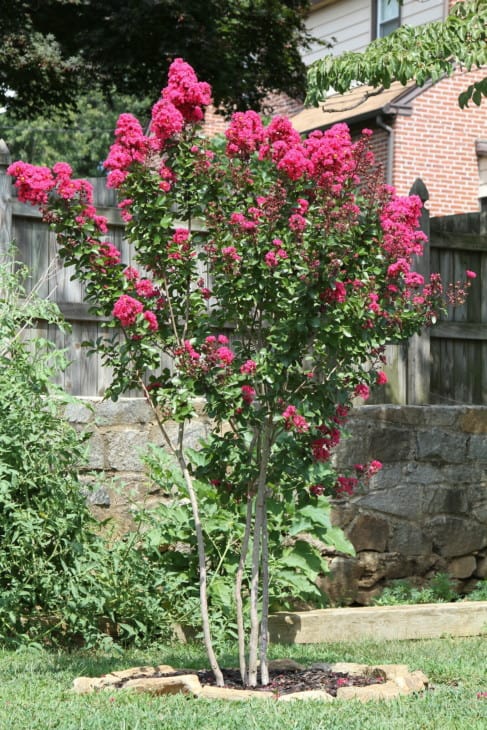
Crepe Myrtles have paper-thin sheets of bark and smooth trunks. They are attractive trees for gardens and landscapes because of their long-lasting blossoms that emerge during the summer. Their crinkled flowers have a texture akin to crepe paper and come in a variety of colors ranging from white to purple to crimson.
17. River Birch (Betula nigra)
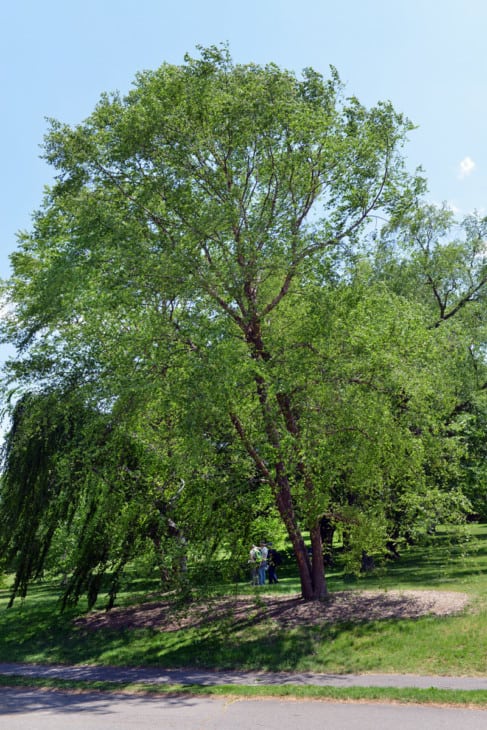
The river birch, which may reach a height of 80 feet, is a popular natural landscape tree because of its reddish-brown, papery bark, beautiful branching, drought resistance, and ease of transplanting. The river birch generally produces thin, cylindrical light green blossoms in early spring and prefers moist, wet soil, which is why it is commonly found in floodplains and along riverbanks.
18. Magnolia (Magnolia grandiflora)
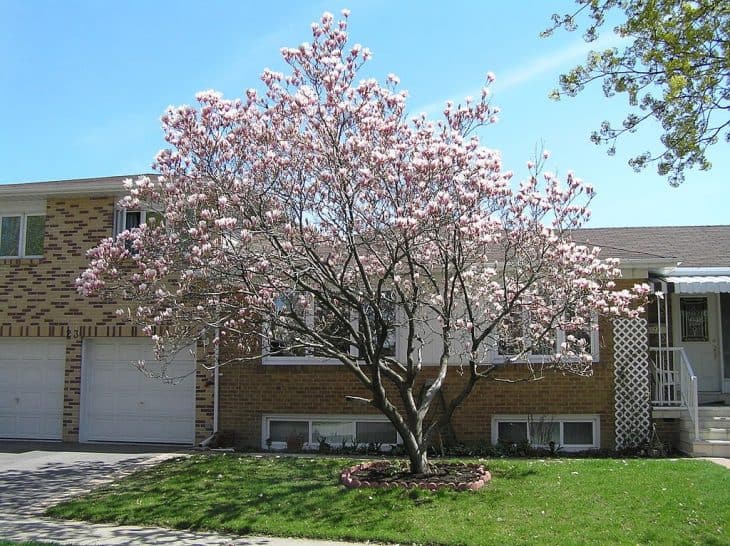
Magnolias are a common choice for landscapes thanks to their large, lustrous green leaves and stunning white flowers. In the spring and early summer, the enormous fragrant white blossoms appear. They also make excellent ornamental plants, loving full sun to partial shade, damp or well-drained soil, and are known for their flood tolerance.
19. American Beech (Fagus grandifolia)
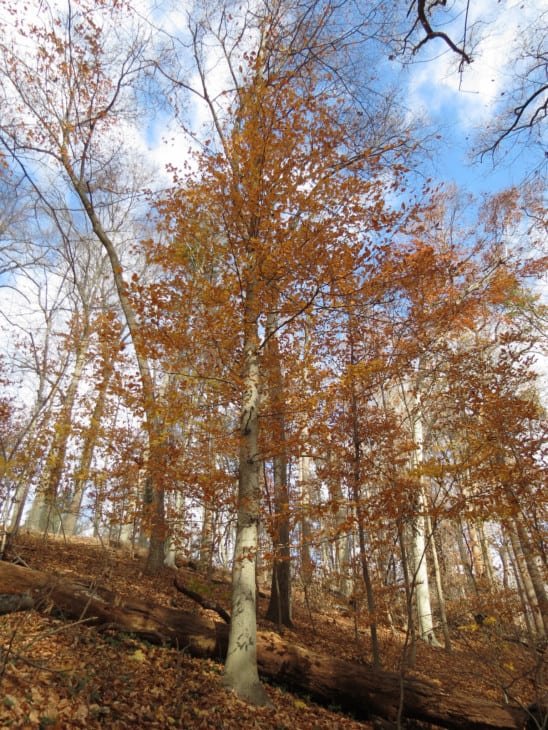
The American Beech is a deciduous tree native to the Eastern United States. Their smooth, grey bark and dark green foliage, which are oval and have little teeth along the margins, help to identify them. American Beeches thrive in shaded and are frequently seen near sugar maple trees. Beech trees were formerly thought to indicate good farming since they demand a lot of moisture and rich soil.
20. Hackberry (Celtis occidentalis)
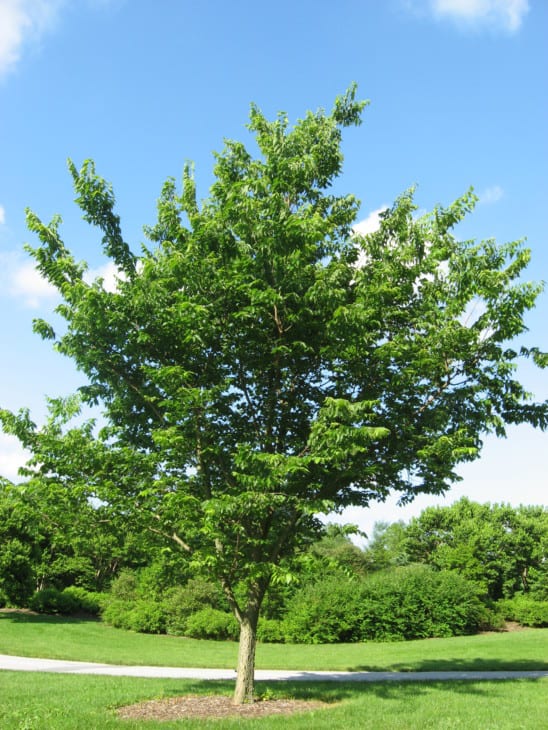
Hackberry trees are long-lived, hardwood, and light-colored trees, featuring yellow, gray, and brownish streaks. It grows 30 to 50 feet in height with a narrow trunk. In ideal conditions, the tree can survive up to 150 to 200 years. The leaves range in color from green to dark red or brown.
21. Basswood (Tilia americana)
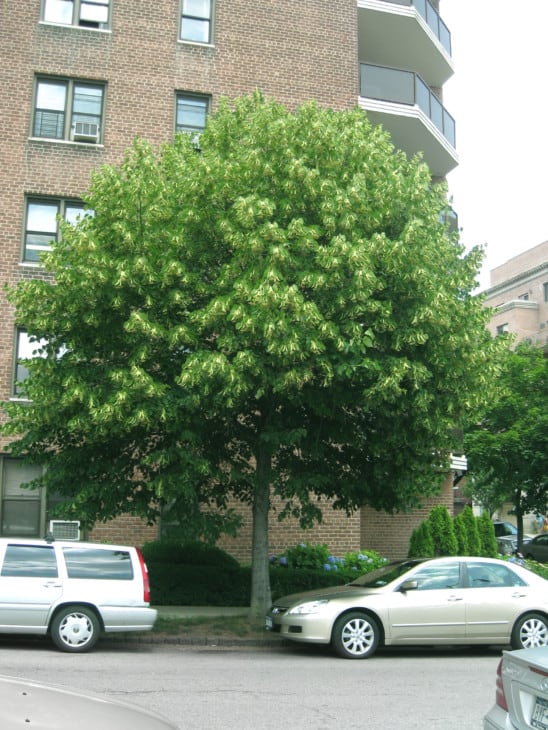
Carolina basswood is only found in the Piedmont and southern Coastal Plain on well-drained loam. It has leaves that are slightly smaller than American basswood and are heavily covered with yellowish or brown hair. The American basswood reached up to 70 to 80 feet and is often found on rocky slopes.
22. White Ash (Fraxinus americana)
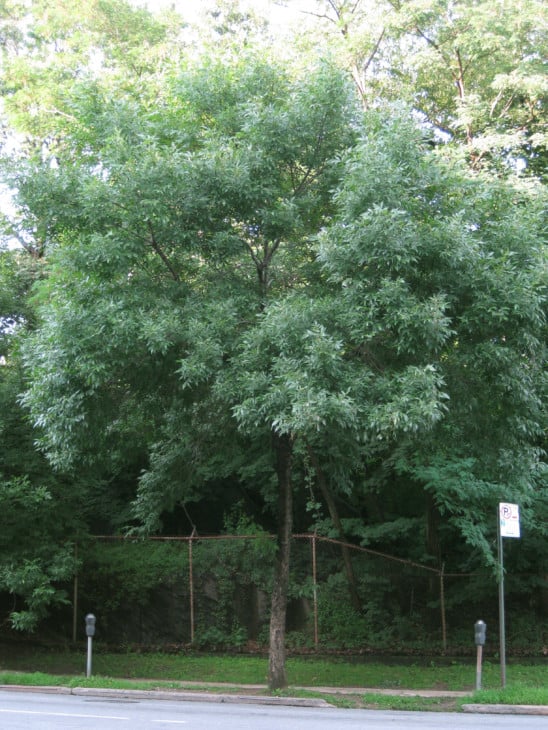
The White Ash is a deciduous tree found throughout North Carolina, which grows as tall as 60 to 90 feet. It grows best in river bottomlands or in rich, moist soils. It has a yellowish-brown or light gray bark with deep ridges. It flowers in spring with tiny light green to purple blossoms.

